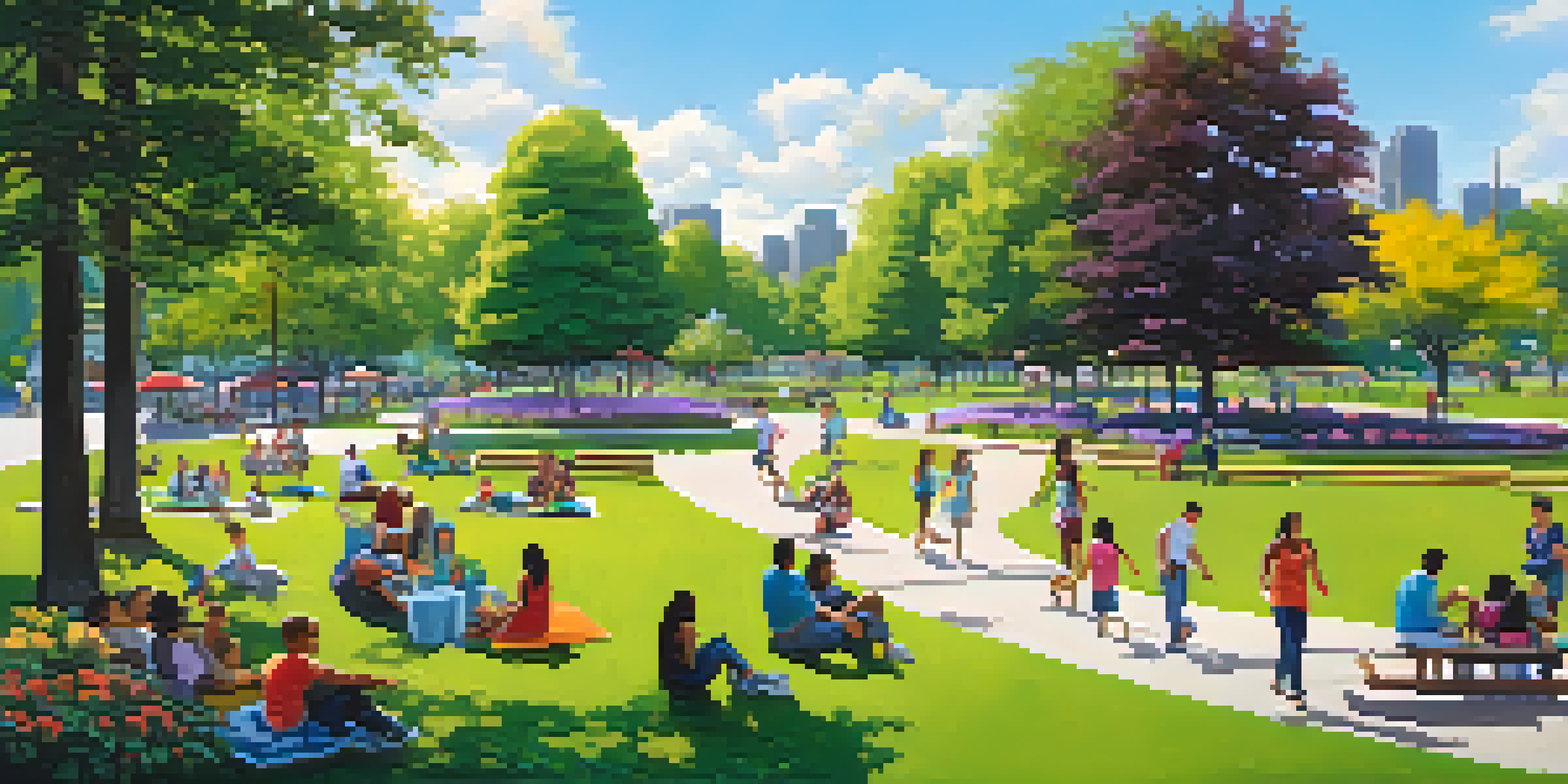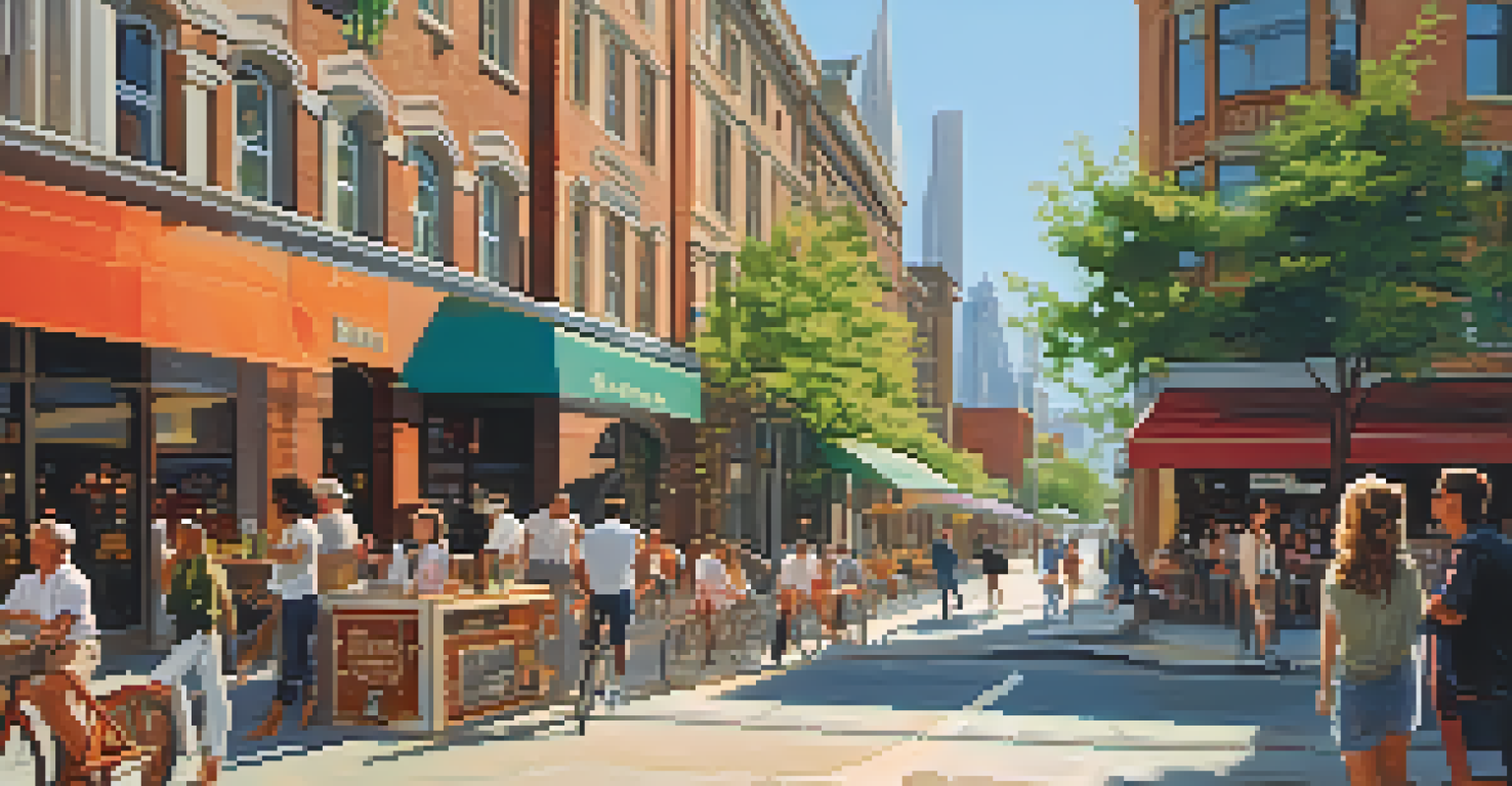Zoning Laws and Collaborative Urban Design Strategies

What Are Zoning Laws and Why Do They Matter?
Zoning laws are regulations that dictate how land can be used in specific areas. They help communities manage growth and protect property values by designating zones for residential, commercial, industrial, and agricultural use. Think of it as a way to ensure that a bustling café doesn't pop up next to a quiet neighborhood, keeping harmony in land use.
The best way to predict the future is to create it.
By establishing these boundaries, zoning laws also foster public safety and environmental protection. For instance, they can limit the height of buildings to avoid overshadowing nearby homes or protect green spaces from overdevelopment. This balance is crucial for creating livable, sustainable communities where everyone can thrive.
Understanding these laws is essential for anyone involved in urban planning or real estate development. They shape not only how we build but also how we interact with our surroundings. Therefore, staying informed about zoning regulations can lead to better decision-making and community engagement.
The Role of Collaborative Urban Design in City Planning
Collaborative urban design involves various stakeholders, including residents, architects, and city officials, working together to shape urban spaces. This approach values diverse perspectives, ensuring that the needs and desires of the community are at the forefront of planning. Imagine a neighborhood park designed not just by planners but also by local families who will use it daily.

This collaboration often leads to innovative solutions that might not emerge in traditional top-down planning processes. By engaging with the community, urban designers can identify unique challenges and opportunities that might otherwise go unnoticed. For example, a simple community dialogue could reveal the need for more pedestrian pathways or green areas.
Zoning Laws Shape Community Growth
Zoning laws regulate land use, ensuring harmonious development and protecting property values in communities.
Ultimately, collaborative urban design fosters a sense of ownership and pride among residents, making them more likely to care for and invest in their community. It transforms city planning from a bureaucratic process into a shared journey towards a more vibrant and inclusive urban environment.
How Zoning Laws Influence Urban Design Choices
Zoning laws significantly affect urban design by dictating what can be built where. For instance, a zone designated for commercial use may limit residential development, steering the design of buildings and public spaces accordingly. This creates a framework within which urban designers must operate, balancing creativity with regulatory constraints.
Community engagement is not a one-time event; it's a continuous process.
In some cases, zoning can stifle innovation, especially in rapidly evolving urban areas. Designers might find themselves constrained by outdated laws that don’t reflect contemporary needs, such as mixed-use developments that combine living, working, and recreational spaces. Adapting these laws can lead to more flexible designs that better serve modern lifestyles.
However, when zoning laws are aligned with the goals of collaborative urban design, they can enhance community well-being. For instance, allowing for higher density in certain areas can facilitate the development of vibrant mixed-use neighborhoods, promoting walkability and reducing reliance on cars. This synergy can create a more cohesive urban landscape.
Examples of Successful Collaborative Urban Design Projects
There are numerous examples worldwide where collaborative urban design has resulted in thriving communities. One notable case is the High Line in New York City, a former elevated rail line transformed into a public park. This project was driven by grassroots advocacy, showcasing how community input can lead to innovative urban spaces.
Another example is the redevelopment of the waterfront in San Francisco, where extensive public engagement shaped the design process. Residents voiced their desires for parks, recreational areas, and pedestrian-friendly pathways, leading to a vibrant waterfront that reflects the community's vision. Such projects illustrate the power of collaboration in creating spaces people love.
Collaboration Enhances Urban Design
Engaging various stakeholders in urban design fosters innovative solutions that reflect community needs and desires.
These successful initiatives highlight the importance of integrating community input into urban design. When residents feel heard and involved, they are more likely to embrace and maintain the spaces created, fostering a greater sense of community and belonging.
The Challenges of Balancing Zoning and Design Needs
While zoning laws can provide structure, they can also pose challenges for urban designers. For example, strict zoning regulations may limit creative approaches to land use, making it difficult to adapt to changing community needs. Designers often find themselves navigating a complex web of regulations that may not align with contemporary urban challenges.
Moreover, conflicting interests among stakeholders can complicate the design process. Local businesses may want more parking spaces, while residents might prioritize green areas. Finding common ground requires careful negotiation and often innovative compromises that satisfy diverse needs.
Despite these challenges, the collaboration between urban designers and zoning officials can lead to more effective solutions. By fostering open communication and understanding, stakeholders can work together to create zoning laws that facilitate rather than hinder creative urban design.
Future Trends in Zoning and Urban Design Collaboration
Looking ahead, we can expect to see a shift towards more flexible zoning laws that accommodate evolving urban needs. As cities grow and change, there is a growing recognition of the need for adaptability in zoning regulations. This flexibility can encourage innovative designs that reflect contemporary lifestyles and sustainability goals.
Additionally, technology is playing a crucial role in enhancing collaborative urban design processes. Digital tools allow for greater community engagement and input, making it easier for residents to share their ideas and feedback. Virtual town halls and online surveys are becoming common, ensuring that more voices are heard in the planning process.
Community Engagement is Essential
Active community involvement in urban planning leads to relevant designs that enhance residents' quality of life.
Ultimately, the future of urban design will likely be characterized by a stronger emphasis on collaboration, sustainability, and adaptability. As cities continue to evolve, fostering partnerships between designers, residents, and policymakers will be essential for creating vibrant, inclusive urban environments.
The Importance of Community Engagement in Urban Planning
Community engagement is a cornerstone of successful urban planning. When residents are actively involved in the design process, it fosters a sense of ownership and pride in their neighborhoods. Engaged communities are more likely to advocate for their needs, ensuring that urban spaces reflect the desires of those who inhabit them.
Moreover, community input can lead to more relevant and effective design solutions. Local insights often highlight unique cultural and social dynamics that planners may overlook. By incorporating these perspectives, urban designers can create spaces that resonate with residents and enhance their quality of life.

Incorporating community engagement into urban planning transforms it from a top-down approach into a collaborative journey. This shift not only enriches the design process but also builds stronger, more connected communities that feel empowered to shape their environments.